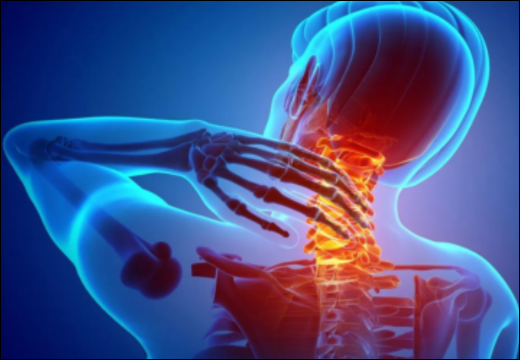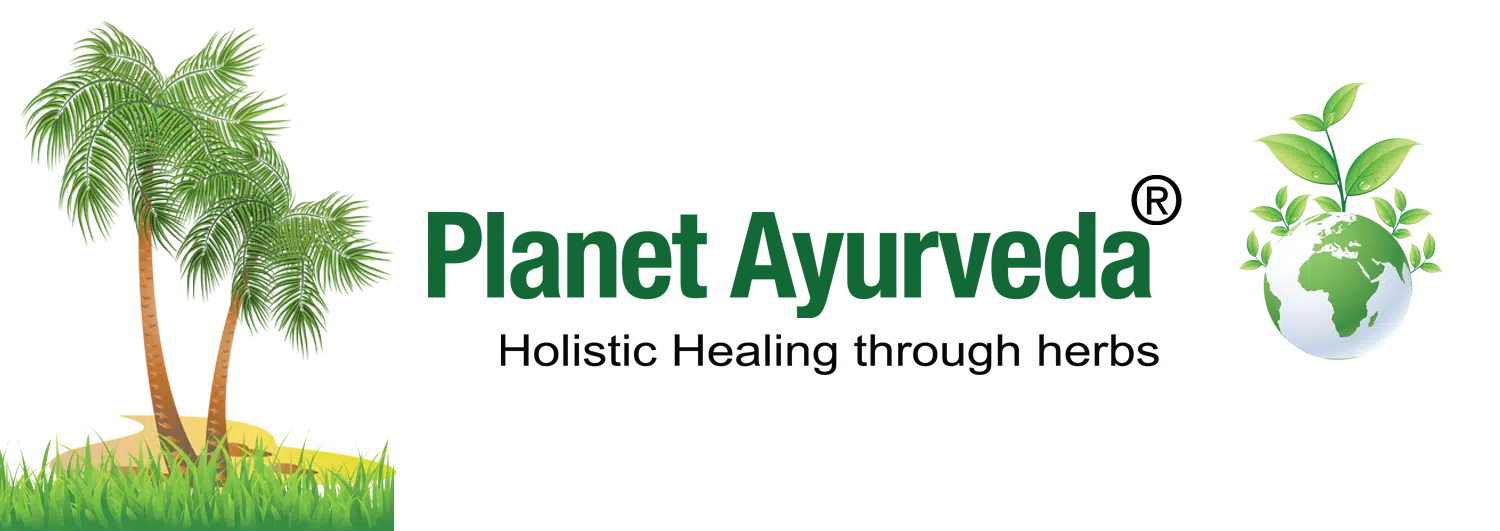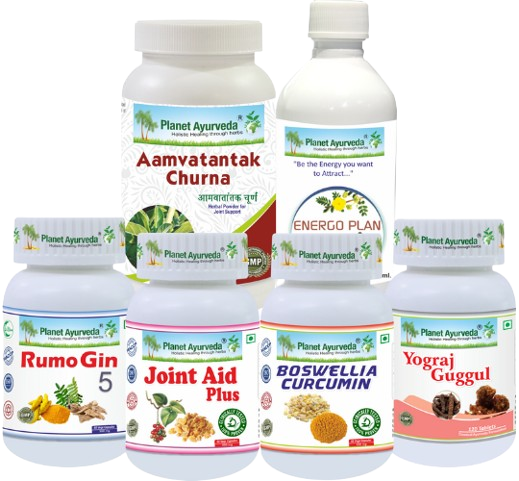Polymyalgia Rheumatica (PMR) – Causes, Symptoms, Treatment & Herbal Remedies
Abstract
Autoimmune disorders involving Musculo-Skeletal System have become so common these days in all age groups that there is no telling if it’s just regular pain due to, let’s say, overexertion or if it’s your own body working against itself. Polymyalgia Rheumatica is one such autoimmune disorder that causes intense pain, stiffness in the body, often debilitating the patient, if not treated on time. Whereas, modern medicine only has temporary symptomatic treatment for it, Ayurveda believes it to be a Vata Vyadhi (Vata related disorder) and works at the root level to cure it naturally. Let’s discuss it in detail!

Introduction
Polymyalgia rheumatica (PMR) is a systemic inflammatory disorder that primarily affects the muscles and joints, causing pain and stiffness most commonly in the shoulders, neck, upper arms, and hips, though it may involve the entire body. The term is derived from “poly” (many) and “myalgia” (muscle pain). “Rheumatic” comes from the Greek “rheum” (flow), once thought to spread symptoms through unhealthy bodily fluids. Also known as Anarthritic Rheumatoid syndrome, it is an auto-immune condition that almost exclusively occurs in individuals over the age of 50, with women being affected more often than men. Symptoms are typically most severe in the morning, gradually easing as the day progresses, yet often lingering throughout the day and evening. PMR is strongly linked with elevated markers of inflammation such as erythrocyte sedimentation rate (ESR) and C-reactive protein (CRP). Importantly, some patients may also develop giant cell arteritis (GCA), also called Horton’s disease.
Causes
- Genetic predisposition – HLA-DR4 and related genes increase risk.
- Immune dysfunction – Overactive immune response causes muscle and joint inflammation.
- Age factor – Mostly affects people over 50 years.
- Environmental triggers – Viral/seasonal infections; Epstein–Barr virus is a possible factor.
- Association with GCA – Indicates a shared inflammatory mechanism.
- Gut health link – Altered microbiota and chronic bowel inflammation may contribute.
- Vaccination factor – Rare cases reported in healthy individuals after influenza vaccination.
Symptoms
- Sudden onset of pain and stiffness around large joints, especially shoulders and hips.
- Morning stiffness lasts over 30 minutes or after rest.
- Bilateral involvement – Symptoms usually affect both sides of the body.
- Pain extending to the neck, back, arms, and buttocks.
- Difficulty with daily tasks like dressing or combing hair.
- Weakness and fatigue.
- General malaise (feeling unwell).
- Loss of appetite.
- Weight loss.
- Mild swelling of hands or wrists.
- Low-grade fever.
Diagnosis
- Medical history and physical exam – Age typically >50 years. Check for family history and evaluate physical symptoms.
- Inflammatory Markers (typically elevated) –
- Erythrocyte Sedimentation Rate (ESR): Often >50 mm/hr.
- C-Reactive Protein (CRP): Usually elevated.
- Complete Blood Count (CBC) – May show mild anemia of chronic disease.
- Rheumatoid Factor (RF) and Anti-CCP antibodies – Usually negative (helps differentiate from RA).
- Ultrasound – Detects bursitis, synovitis, or tenosynovitis, commonly in shoulders and hips.
- MRI – Can confirm inflammation in proximal muscles and bursae.
- PET scan – Sometimes used to exclude giant cell arteritis (GCA) if suspected.
- Exclusion of Other Conditions – Rheumatoid arthritis, Spondyloarthritis, Polymyositis or myositis, Hypothyroidism, Malignancy, Infections.
- Response to Corticosteroids – Rapid response to low-dose corticosteroids (10–20 mg prednisone daily) is highly suggestive of PMR.
Treatment
1. Corticosteroids (Glucocorticoids)
Prednisone is the first-line treatment.
2. Steroid-Sparing Agents
Methotrexate and Leflunomide.
3. Biologic Therapies
Tocilizumab and Sarilumab.
4. Calcium and Vitamin D Supplementation
To prevent corticosteroid-induced osteoporosis.
5. Bisphosphonates
To reduce fracture risk.
Ayurvedic Overview
Polymyalgia Rheumatica in Ayurveda is said to be a Vatavyadhi (Vata related disorder). Lets learn the role of Vata in causing disease from these shlokas below (Sanskrit text)-
स्वकर्म कुर्वते देहो धार्यते तैरनामयः ||
विमार्गस्था ह्ययुक्ता वा रोगैः स्वस्थानकर्मजैः |
शरीरं पीडयन्त्येते प्राणानाशु हरन्ति च ||
It means when Vata is at balance, at its abode with free movement, it gives the person a long, disease free life. Whereas, if the Vata dosha gets vitiated, it will result in disease formation at the site it resides in and may even cause instant death.
Polymyalgia Rheumatica is a Vata disorder, involving Mamsa Dhatu (Muscle tissue) and involvement of Ama (Metabolic endo toxins) is also seen. Excessive indulgence in habits and lifestyles that aggravate Vata dosha plays a central role in the pathogenesis of Vata Vyadhi. Factors such as Ativyayama (Overexertion beyond one’s physical capacity), frequent intake of Ruksha (Dry), Laghu (Light), or Alpa Ahaara (Insufficient food), Ratrijagran (Staying awake during late nights), prolonged exposure to cold winds, and persistent mental strain caused by grief or anxiety gradually disturb the natural balance of Vata. This continuous provocation ultimately results in the aggravation and vitiation of Vata dosha, paving the way for various disorders. Moreover, imbalanced Vata disturbs Agni (Digestive fire) and hence, Aam (Metabolic endotoxins) are formed. This vitiated Vata, imbalances Kapha and Pitta doshas as well, along with Aam (Metabolic endotoxins), it leads to obstruction in various Srotas (Channels in the body). All this further agitates Vata and it gets Sthan-Samshraya in mainly Mamsa dhatu (Muscle tissue) and also Sandhiyan (Joints) across the body. This whole process manifests as various symptoms as explained in the shloka (Sanskrit text) below-
सरुक् श्रमितमत्यर्थं मांसमेदोगतेऽनिले ||
This means, when aggravated Vata localizes in the muscles and fat tissues, it produces symptoms such as a sense of bodily heaviness, sharp pricking pains, soreness resembling the effect of being struck with a rod or fist, along with intense and distressing fatigue.
Treatment in Ayurveda is focused on restoring Vata balance and also the removal of Aam (Metabolic endotoxins) from the body. Some classical formulations that help in combating Polymyalgia Rheumatica are Simhanad Guggul, Gandharva Haritaki, Shunthi Phant etc. Herbs like Guggul (Commiphora mukul), Shallaki (Boswellia serrata), Haridra (Curcuma longa) and Chitrak (Plumbago zeylanica) help in relieving pain, stiffness and improve mobility. Balya herbs like Ashwagandha (Withania somnifera), Shatavari (Asparagus racemosus), Sariva (Hemidesmus indicus) and Bala (Sida cordifolia) are also helpful in maintaining strength and supporting rejuvenation of affected muscle tissues.
The role of Basti (Therapeutic enema) can not be replaced in managing Vata disorders like PMR. Niruhabasti (Therapeutic enema using herbal decoction) and especially, Vaitrana Basti show promising results in PMR patients. The use of Vaitrana Basti here is like ‘killing two birds with one stone’ as it not only brings harmony to vitiated Vata dosha, but it also helps in managing Aam predominance in the body, directly targeting the roots of this disease.
Dietary Habits And Lifestyle Modifications
- Warm, unctuous, and easily digestible foods like old rice, wheat, barley, and moong dal. Khichdi with ghee is highly recommended. Bottle gourd, ridge gourd, pumpkin, ash gourd, spinach, drumstick, carrots are beneficial.
- Dry, cold, stale, and refrigerated foods, excess pulses like chana, rajma, urad dal, sour, fermented foods (curd at night, pickles, vinegar) and excessively spicy, fried, or junk food is to be avoided.
- Adequate hydration with 2–2.5 liters of water per day is advisable. Warm water is better.
- Yogasana – Should preferably be done under expert guidance. Tadasana, Setubandhasana, Supta Matsyendrasana and Bhujangasana.
- Physical exercise – Very gentle and mild stretching exercises should be done after proper warm-up through light walking, if possible. Intense exercises are to be avoided.
Herbal Remedies For Polymyalgia Rheumatica By Planet Ayurveda
Planet Ayurveda is a globally recognized Ayurvedic healthcare company committed to promoting authentic Ayurveda for the prevention and management of various health conditions. Established with the vision of providing pure, safe, and standardized herbal formulations, Planet Ayurveda integrates the ancient wisdom of Ayurveda with modern scientific research. It also provides expert guidance on lifestyle and diet to complement its herbal treatments.
For Polymyalgia Arthritis, we have PR Care Pack containing the following medicines:
- RumoGin 5 Capsules
- Boswellia + Curcumin
- Yograj Guggul
- Aamvatantak Churna
- Joint Aid Plus
- Energo Plan Syrup
Product Description
1. RumoGin 5 Capsules
These capsules are made from key ingredients like Haridra (Curcuma longa), Sonth (Zingiber officinale) and Shallaki (Boswellia serrata). These capsules majorly balance Vata dosha and thereby, help in relieving pain. Active compounds like curcuminoids, gingeroles and boswellic acids, are immuno-modulatory, anti-inflammatory and analgesic in action.
Dosage – 1 capsule twice daily with warm water.
2. Boswellia + Curcumin
These capsules are made from potent herbs like Haridra (Curcuma longa) and Shallaki (Boswellia serrata). They pacify aggravated Vata dosha and also mildly balance Kapha dosha. Curcuminoids and boswellic acids present in these capsules are potent anti-inflammatory agents that reduce stiffness, muscle pain, and swelling in patients of PMR. They also support circulation and mobility in muscle/joints.
Dosage – 1 capsule twice daily with warm water.
3. Yograj Guggul
These tablets are made by using key ingredients like Guggul (Commiphora mukul), Musta (Cyperus rotundus) and Chitrak (Plumbago zeylanica). These balance all three doshas (Vata, Pitta and Kapha). Active compounds like guggulsterones, cyperene, plumbagin and plumbagic acid work as immuno-modulators, anti-inflammatory, analgesic and anti-oxidant agents. They reduce stiffness, improve mobility and also aid in tissue rejuvenation.
Dosage – 2 tablets twice daily with warm water.
4. Aamvatantak Churna
This herbal powder is made from key ingredients like Ashwagandha (Withania somnifera), Methi (Trigonella foenum-graecum) and Suranjaan (Colchicum automnale). These herbs, combinedly, are Tridosha shamak (Vata, Pitta and Kapha pacifying). The alkaloids, flavonoids and saponins present in them help in reducing autoimmune inflammation in PMR. Ashwagandha acts as a Rasayana (Rejuvenator), improving muscle tone and energy.
Dosage – 1 teaspoonful twice daily with warm water.
5. Joint Aid Plus
These capsules are made from key ingredients like Nirgundi (Vitex negundo), Shallaki (Boswellia serrata) and Guggul (Commiphora mukul). These balance Vata and Kapha dosha, relieve pain, stiffness and edema due to presence of flavonoids, phenolic compounds and essential oils. It also provides rejuvenative support to improve strength and flexibility.
Dosage – 1 capsule twice daily with warm water.
6. Energo Plan Syrup
This syrup is made from key ingredients like Jeevanti (Leptadenia reticulata), Amalki (Emblica officinalis) and Shatavari (Asparagus racemosus). This syrup is Tridosha (Vata, Pitta and Kapha) balancing, and presence of flavonoids, phenolic compounds, glycosides etc. in these herbs improve muscle tone, energy levels, and stamina, addressing weakness and fatigue in PMR patients.
Dosage – 1 teaspoon twice a day with warm water.
To buy PR Care Pack, please visit store.planetayurveda.com/products/pr-care-pack
Conclusion
Polymyalgia Rheumatica (PMR) is a complex autoimmune inflammatory disorder marked by pain, stiffness, and restricted mobility that significantly impairs quality of life. While modern medicine emphasizes corticosteroids and biologics for symptomatic control, Ayurveda provides a holistic approach by addressing the root cause through pacification of aggravated Vata and elimination of Aam (Metabolic endotoxins). Classical formulations such as Simhanad Guggul, Gandharva Haritaki, and therapy like Vaitrana Basti play a vital role in restoring doshic balance, reducing inflammation, and rejuvenating muscle tissues. In addition, supportive herbs like Ashwagandha, Bala, and Shatavari enhance strength and vitality, while dietary regulation and yogic practices help maintain long-term well-being. Reach out to an Ayurvedic Practitioner if you are struggling with PMR and get the right kind of guidance and treatment.
Frequently Asked Questions (FAQ’s)
Q1. What is the difference between rheumatoid arthritis and polymyalgia rheumatica?
Polymyalgia rheumatica (PMR) affects people over 50, causing shoulder and hip stiffness that improves with low-dose steroids and does not damage joints. Rheumatoid arthritis (RA) usually affects younger adults, especially women, targeting small hand and foot joints, causing synovitis and joint damage, and requiring long-term DMARDs or biologics.
Q2. What are the worst symptoms of polymyalgia?
Polymyalgia rheumatica (PMR) causes severe stiffness and pain in the neck, shoulders, and hips, restricting daily activities. Its link with giant cell arteritis (GCA) poses risks like headaches, jaw pain, or vision loss, demanding urgent treatment.
Q3. What can be mistaken for polymyalgia rheumatica?
Conditions that can resemble polymyalgia rheumatica (PMR) include inflammatory disorders like rheumatoid arthritis, spondyloarthropathy, RS3PE, and vasculitis, as well as non-inflammatory issues such as fibromyalgia, infections, thyroid disease, and certain cancers.
Q4. What happens if polymyalgia is left untreated?
If left untreated, polymyalgia rheumatica (PMR) can cause persistent discomfort and may progress to long-term disability.
Q5. What is the ICD 10 code for polymyalgia rheumatica?
In the ICD-10 classification, polymyalgia rheumatica is listed under code M35.3, within the chapter covering musculoskeletal and connective tissue disorders.
Q6. Is it possible to have PMR and RA at the same time?
Having polymyalgia rheumatica (PMR) and rheumatoid arthritis (RA) together is uncommon. However, PMR is frequently associated with giant cell arteritis (temporal arteritis), an inflammatory condition affecting blood vessels.
Q7. Is PMR related to Covid 19?
In this instance, COVID-19 was linked to the onset of autoimmune and inflammatory rheumatic symptoms. Polymyalgia rheumatica (PMR), though uncommon, should be considered among the diverse rheumatologic conditions that may appear following SARS-CoV-2 infection.




